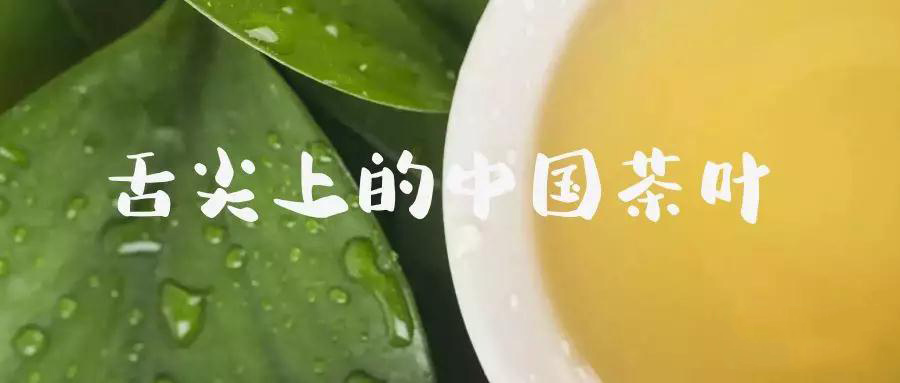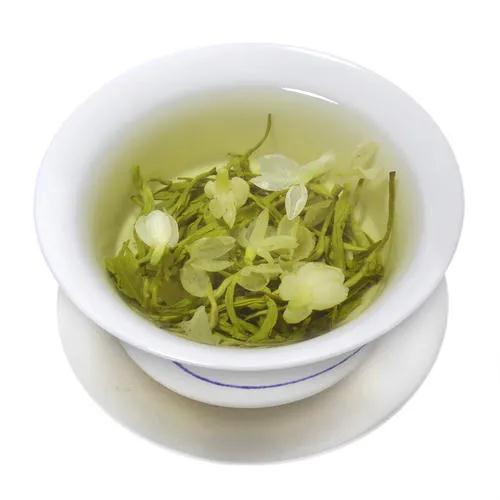
Jasmine tea, as a unique scented tea in China, is a kind of reprocessed tea. Scented tea can be divided into Jasmine Tea, Magnolia Tea, Chloranthus Tea, Gardenia Tea, Orange Blossom Citrus Aurantium Tea, Osmanthus Tea, Rose Tea, Shaddock Tea, Honeysuckle Tea and so on. But in the current market, Jasmine Tea occupies first place, Magnolia Tea comes second, and there are also a small number of scented teas processed with a variety of other fresh flowers.
Jasmine Tea (such as Jasmine Snow Bud/Mo Li Xue Ya Scented Green Tea and Organic Chinese Loose Small Jasmine Dragon Phoenix Pearl/Mo Li Long Zhu Green Tea Scented Tea/Deep Fragrance Long Zhu Scented Tea) perfectly combines the flavor of delicate tea base and the aroma of fresh jasmine flowers by laying the tea base beneath a bed of fresh jasmine flowers for several consecutive nights, leading to a smooth and refreshing sweet taste with the fragrant jasmine aroma. We called this process “scenting”. Lovely delicate mouth feel of premium jasmine tea. The steeped cup is stunningly fragrant, sweet, floral, and phenomenally silky.

Fujian Jasmine Tea, one of the best Jasmine Tea in China, has been developed since the Ming Dynasty. According to historical records, tea farmers in Fujian Provence have planted Jasmine in the Song Dynasty and used jasmine flowers as the raw materials for scented tea.
Fujian Jasmine Tea is processed according to the amount of fresh flowers and the scenting times by taking baked green tea and fresh magnolia flowers as base, together with fresh jasmine flowers. Fujian common grade Jasmine Tea mainly adopts baked green tea as base. There are also high-grade jasmine teas which are scented with roasted green tea, West Lake Dragon Well/Long Jing/Lung Ching Green Tea, Dongting Bi Luo Chun/Pi Lo Chun/Green Snail Spring Green Tea, Fuding Da Bai Hao, Nonpareil High Mountain Bai Hao Yin Zhen/Silver Needle White Tea, Premium Bai Mu Dan/Paimutan/White Peony White Tea, Song Zhen Cha/Green Silver Needle/Green Pine Needle Green Tea, Organic Premium Mao Feng Green Tea and so on. Compared with other kinds of scented teas, Jasmine Tea has the delicate jasmine fragrance. The lingering aroma of pure Fujian Jasmine Tea is elegant and strong, but not pungent at all. Steeping brings out a bright and yellowish green infusion that is highly aromatic and sure to delight the senses. This mild and exquisite tea tastes subtly sweet and mellow with a prominent flowery aroma of jasmine, which is rare among all the other scented teas.
Jasmine Tea can be divided into common grade jasmine tea and special grade jasmine tea (or divided by scenting). Common grade jasmine tea generally refers to jasmine tea which is produced by processing the raw materials of baked green tea, magnolia flowers and jasmine flowers through the production process of “One Scenting+Yi Ti”, “Two Scenting+Yi Ti” or “Three Scenting+Yi Ti”. Special grade jasmine tea refers to jasmine tea which is delicately produced by processing the raw materials of famous green tea and high quality jasmine flowers through the production process of “Four Scenting+Yi Ti”, “Five Scenting+Yi Ti” or “Six Scenting+Yi Ti”. (Alongside the traditional scenting for one or more times, Jasmine Tea has also undergone a special process called Yi Ti or Ti Hua, meaning “final scenting”, with the goal of enhancing the intensity of the jasmine fragrance. Only first-grade jasmine flowers are used for this, with their large petals, pure white color, and intense fragrance. In order to retain this charming scent, the tea leaves and jasmine flowers are mixed together for one more scenting, with no further drying afterwards.)
Jasmine tea is mainly exported to Southeast Asia, the Middle East, the European Union, America, Russia and other countries, and the annual sales volume has increased significantly year by year.

More knowledge about Jasmine Tea
According to the Historical Records of the Han Dynasty, Jasmine originated in the ancient Roman Empire, arrived in ancient Persia and India through the Maritime Silk Road during the Han Dynasty, becoming a Buddhist holy flower in India, and then travelled to Fuzhou, China along with Indian Buddhism.
In the Tang Dynasty, Jasmine was considered to be a symbol of jade bones and ice skin--said of an elegant demeanor and high personality as pure as jade and as clean as ice, and indifference to fame and wealth, representing the integrity of literati and officialdom (in feudal China). It was believed that when jasmine came out, all other sorts of flowers were not fragrant any more. Since then, jasmine had become a "heavenly fragrance", and was regarded as Buddhist holy article together with Bodhi.
In the Song Dynasty, there appeared a nationwide upsurge of mixing spice into tea in China, because spice was a health product and a guiding drug in ancient times, and tea was a medicine and could resolve the hundred toxins. Both tea and medicine were called "dao" in the local dialect in Fuzhou, leading to the combination of spice and tea. There were dozens of kinds of spiced tea in the Song Dynasty. After the change of the times, many kinds of flowers were eliminated, and only five or six kinds were left, wherein jasmine accounts for 96%, and thus Jasmine Tea began to flourish.
Jasmine tea was first a spiced tea enjoyed by literati and officialdom. It began to be commercialized in the late Ming Dynasty and was massively commercialized in the Qing Dynasty.
Empress Dowager Cixi has a special preference for jasmine. Cixi believed that her skin was as smooth as silk and as white as snow, so she forbade other people from wearing jasmine flowers. When foreign ambassadors and their wives arrived in China,


